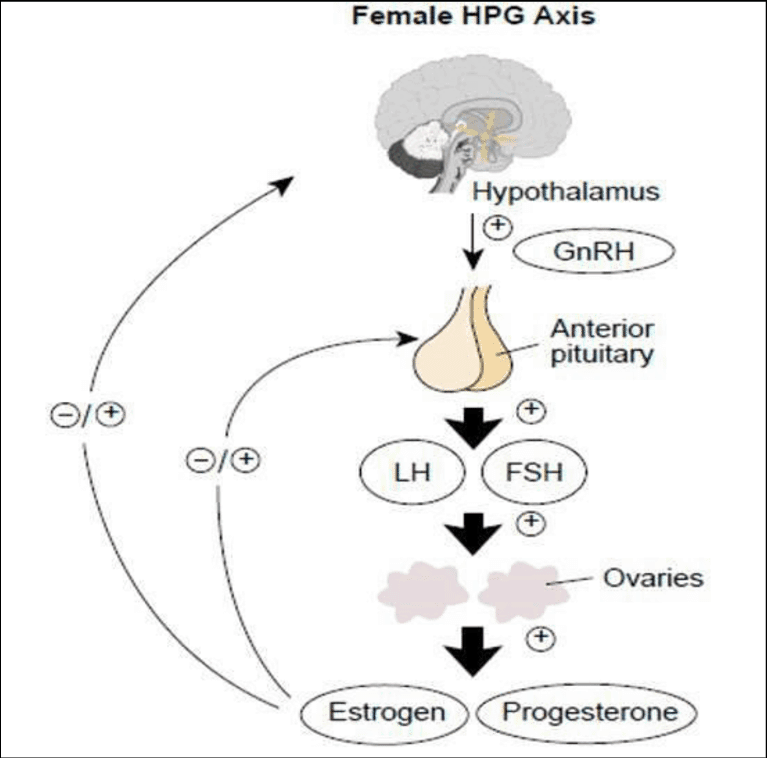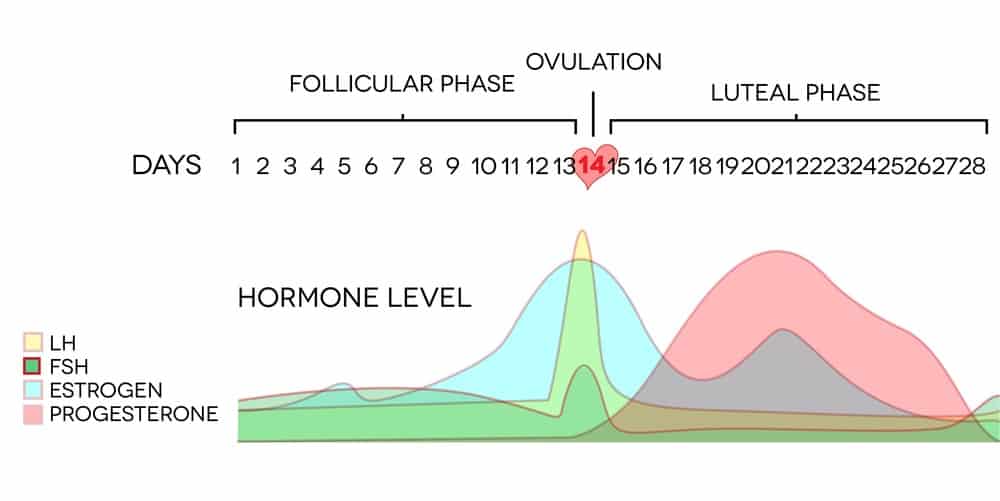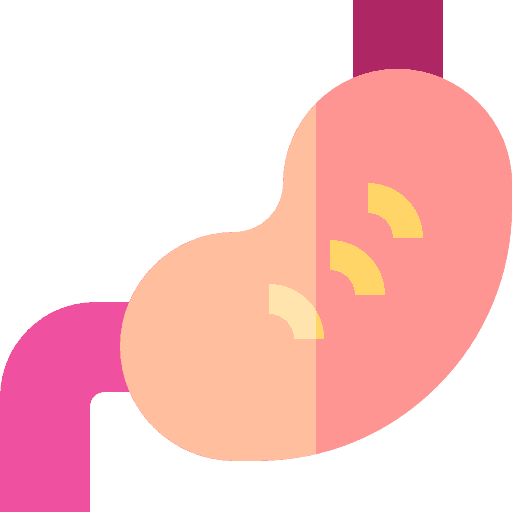Many women experience uncomfortable and frustrating changes to their body with every monthly cycle.
Among these discomforts are hormonal and behavioral fluctuations that can make weight loss even more challenging than it already is.
But losing weight, even when on your period, is possible.
This article takes a look at how your menstrual cycle impacts the hormones that influence your body weight, and how premenopausal women can still achieve their weight loss goals.
But first, let’s review some menstrual cycle basics.
What Is The Menstrual Cycle?

The menstrual cycle makes reproduction possible for females.
It’s regulated by a series of hormonal changes that prepare the body to carry a baby.
During each cycle, an egg matures in the ovary. It’s released mid-cycle, and the lining of the uterus thickens in case the egg is fertilized.
When the egg isn’t fertilized, the uterine lining is shed—this is your period.
What’s A Normal Menstrual Cycle?
There’s a wide range of what’s considered “normal.”
Most women have cycles lasting 26 to 35 days. This is the number of days between the first days of two consecutive periods.
The average menstrual period lasts 5 days, though this can vary from person to person and month to month (1).
There’s also a wide range of what’s considered abnormal. Symptoms of menstrual irregularity include:
- Missing several periods in a row
- Heavier or lighter flow than usual
- Cycles longer than 35 days or shorter than 21 days
- Mid-cycle spotting
- Severe pain, cramping or discomfort.
These problems may be caused by hormonal imbalances, conditions like endometriosis or polycystic ovary syndrome (PCOS) or other problems. Speak with your gynecologist if have concerns about your cycles.
Tracking Your Cycle With A Menstrual Cycle Chart
Tracking your menstrual cycles can help you notice any irregularities.
It can also help you identify any patterns during your cycle that impact your body weight.
One simple way to chart is to circle the first and last days of your period on a calendar. You can determine your cycle length by counting the days between the first days of two consecutive periods.
Apps like Flo and Clue can also help you keep track of your cycles, while menstrual cycle calculators can predict the first day of upcoming periods.
Summary: The menstrual cycle prepares the body each month for pregnancy. If the egg isn’t fertilized, the uterine lining is shed (i.e. you have your period). The average menstrual cycle lasts 26 to 35 days, with 5 days of menstrual bleeding. Tracking your periods can help you know if they are a regular and how they may impact your body weight.
Menstrual Cycle Hormones
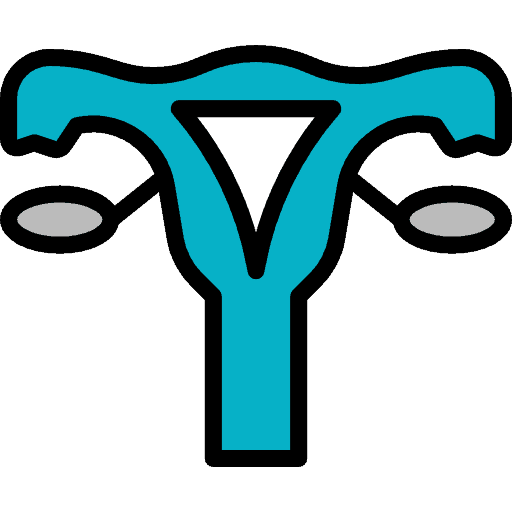
There are four key hormones that regulate the menstrual cycle:
- Estrogen is the primary sex hormone in women. There are actually four types of it, including estradiol, estrone, estriol, and estetrol (2).
- Progesterone helps build up the uterine lining in case of fertilization. Dips in progesterone and estrogen trigger the start of your menstrual period.
- Follicle Stimulating Hormone (FSH) is responsible for helping follicles in the ovaries grow and mature. These follicles house eggs and also secrete estradiol.
- Luteinizing Hormone helps bring about ovulation.
Follicle stimulating hormone and luteinizing hormone are produced and released by the pituitary gland. The release of these hormones triggers production and release of estrogen and progesterone in the ovaries.
The hypothalamus sets off a cascade of reactions that trigger the production and release of the key hormones that regulate the menstrual cycle. Click to enlarge (1).
Summary: The four main hormones involved in the menstrual cycle are estrogen, progesterone, follicle stimulating hormone, and luteinizing hormone. While they all work together, each plays important roles in regulating your periods. Follicle stimulating hormone and luteinizing hormone are made in the pituitary gland and trigger production of estrogen and progesterone in the ovaries.
Menstrual Cycle Phases
There’s some disagreement online as to the number of phases in the menstrual cycle.
Some sites divide it into four phases: the menstrual, follicular, ovulatory and luteal phases.
Others include the menstrual phase within the follicular phase.
For the purposes of this article, we are considering the menstrual cycle to have three phases: the follicular, ovulatory and luteal phases (3).
The phases of the menstrual cycle based on a 28-day cycle. Click to enlarge.
Before we talk about factors within these phases that impact weight loss, we need to first understand how the typical menstrual cycle works.
Follicular Phase
The follicular phase of the menstrual cycle begins on the first day of your period and ends with ovulation.
This phase varies in length but is typically around 14 days.
Estrogen and progesterone are low in the first days of follicular phase, while levels of follicle stimulating hormone (FSH) increase slightly. The result is the development of many follicles in the ovaries, each of which contains an egg.
FSH levels dip as ovulation nears, allowing for only one follicle to continue to develop. This follicle produces estrogen to prepare the body in case the egg is fertilized.
The boost in estrogen causes a drastic spike in luteinizing hormone (LH), which initiates the ovulatory phase.
Ovulatory Phase
The ovulatory phase begins with a big surge in LH and ends when an egg is released.
Notably, LH and estrogen tend to work hand in hand. High estrogen levels near the end of the follicular phase cause the pituitary gland to release more LH.
In turn, higher levels of LH lead to greater production of estrogen in the ovaries (4).
The ovulatory phase is brief, lasting just 16 to 32 hours.
Luteal Phase
The luteal phase begins just after ovulation and ends when you start your period.
Levels of FSH and LH fall after ovulation. Estrogen begins to rise again after a temporary dip, but it’s exceeded by progesterone.
This rise in progesterone prepares your body for pregnancy, in case an egg is fertilized. Both the endometrium and the cervical mucus thicken, while body temperature rises.
FSH and LH levels remain low for the remainder of the cycle, while progesterone and estrogen peak about 5 days before your period. This is roughly when premenstrual syndrome (PMS) sets in for most women, though it’s not clear whether the hormone changes themselves trigger PMS.
It’s been suggested that heightened sensitivity to hormone changes may play a role (5).
If the egg isn’t implanted in the uterine wall, progesterone levels begin to fall. Your period starts when levels dip low enough, and so does a new menstrual cycle.
Summary: The follicular phase, which begins on the first day of your period, prepares the egg for ovulation and possibly fertilization. Ovulation occurs mid-cycle, and rises in progesterone prepare the uterus for implantation. The cycle starts over if the egg isn’t fertilized.
How The Menstrual Cycle Affects Your Body Weight

Changes in body weight are normal across the menstrual cycle.
However, hormonal changes and other factors can make sustained weight loss challenging for premenopausal women. This is one reason some people take DIM supplements, which claim to control estrogen metabolism and help balance hormones.
It can feel a lot of times like your body is working against you, even when you’re doing everything you should be to lose weight.
The luteal phase is especially problematic for many women, with some issues lingering into the first few days of the follicular cycle.
Weight Loss During The Luteal Phase
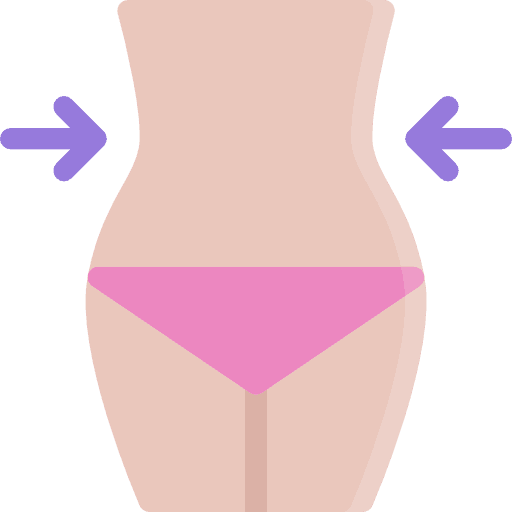
The luteal phase is marked by gradual rises in progesterone and estrogen levels, which dip if the egg isn’t fertilized.
These changing hormones create a variety of issues that may make weight loss more difficult.
This may be especially true for those who experience premenstrual syndrome (PMS).
Large studies have found that nearly 48% of women experience PMS. Smaller studies suggest that it may be even more common, with some reporting that symptoms affect up to 98% of women (6, 7).
Symptoms vary but may include fatigue, food cravings, mood disturbances, and fluid retention (bloating). Hormone and behavior changes in the days before your period may impact body weight.
Let’s look at some of these changes in more detail.
Appetite, Cravings and Emotional Eating

You may feel the urge to eat more during the luteal phase.
Women report greater appetite and eat more calories during this time (8).
In some women, reductions in a hormone called leptin may be to blame. Leptin is a hormone that reduces hunger. It tends to be higher among women who are overweight, so this doesn’t always protect against overeating (9).
Studies have found that leptin rises throughout the menstrual cycle with the highest levels in the luteal phase. In other words, hunger should be lower during the luteal phase, at least from a hormonal standpoint (10, 11).
However, women with a condition called premenstrual dysphoric disorder (PMDD) tend to see a dip in leptin levels and eat more calories late in their cycles. PMDD is a severe form of PMS that typically requires treatment by a doctor (9).
Given that even women with higher leptin levels report greater hunger and higher food intake during the luteal phase, other factors likely play a role. Some of this can be attributed to cravings, which are more common during the luteal phase.
In one study of 259 healthy premenopausal women, cravings for salty foods and sweets were significantly higher in the late luteal phase than in other points of the menstrual cycle (8).
There’s hope, though, if you’re prone to cravings. One study of 275 women found that Americans were significantly more likely to experience chocolate cravings than foreign-born women.
This suggests that cravings may be learned cultural behaviors rather than hormonal events (12).
Constipation
Constipation refers to an inability to fully evacuate the bowels.
It’s a common problem, and some women are especially prone to it during the luteal phase.
In fact, studies have estimated that 10-20% of women become constipated prior to their periods (13).
Considering that the average person passes up to one pound of stool per day, it’s possible to see temporary increases in weight if you’ve been constipated for a few days.
Even if scale weight doesn’t increase, you may look more bloated or feel fuller through the abdomen due to a buildup of gas (14).
To some degree, constipation during the luteal phase could be hormonal. It’s been suggested that dips in progesterone and estrogen prior to menstruation may worsen gastrointestinal symptoms like constipation (13).
However, certain risk factors for constipation can be minimized. These include stress and changes in diet related to cravings.
Try to be mindful of your cravings and only indulge in moderation. Also, schedule in some of your favorite stress-relieving activities when you have PMS.
Speak with your doctor if you often experience depression or anxiety before your period.
Weight Loss During the Follicular Phase
It’s not uncommon to see some reduction on the scale once your period begins.
However, some of the issues that cause the numbers on the scale to creep up during the luteal phase can linger into the follicular phase.
Other factors may indirectly stall weight loss progress, too. Let’s look at a couple of these.
Water Retention
Have you ever experienced breast tenderness during your period?
You can blame water retention for that.
Water retention (“bloating”) is common throughout the menstrual cycle. However, studies have shown that it typically peaks near the first day of your period (15).
Research is conflicting as to why this happens. Some studies suggest that it’s the product of increased estrogen and progesterone, while others have failed to link these hormones to water weight gain (15, 16).
Regardless of hormones, diet can play a role. The carb-dense foods that we often crave during the luteal phase increase the odds of bloating. This is because we hold on to 3-4 grams of water for every gram of carbohydrate we store (17).
If you’re prone to water retention during your period, know that it’s temporary. Avoiding carb-dense meals before and during your period can help you minimize water weight.
Exercise
Exercise during your period can feel like a daunting task.
In one study of 117 premenopausal women, those not taking hormonal birth control reported that exercise seemed the most difficult during the early follicular phase.
Rating of perceived exertion (RPE) was significantly higher during menstruation compared to other points of the menstrual cycle (18).
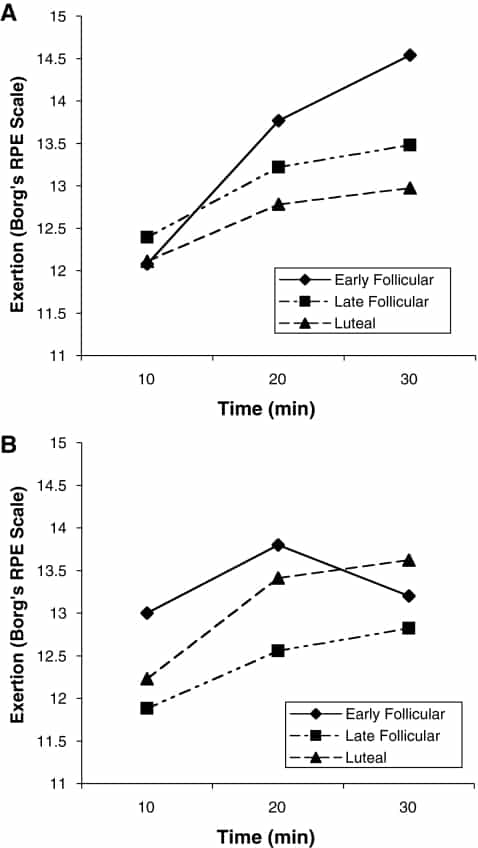
Rating of perceived exertion during exercise throughout the menstrual cycle. Higher values indicate greater difficulty during activity (1).
Keep in mind, though, that RPE is subjective. Other studies have found higher RPE at other points in the cycle, and some question whether RPE varies at all over the course of the menstrual cycle (19, 20).
The take-home message here is that exercise may feel more difficult during your period, or at other points of your cycle.
While RPE doesn’t directly impact body weight, it could make a difference over time if you’re skipping your regular workouts or exercising at a lower intensity.
Summary: Several factors can make weight loss more difficult over the course of the menstrual cycle. Changes in appetite and cravings during the luteal phase and greater perceived effort during exercise during the follicular phase could, in theory, affect weight loss long-term. Meanwhile, constipation in the luteal phase and water retention in the luteal and follicular phases increase scale weight temporarily.
Fat Loss Tips for Premenopausal Women
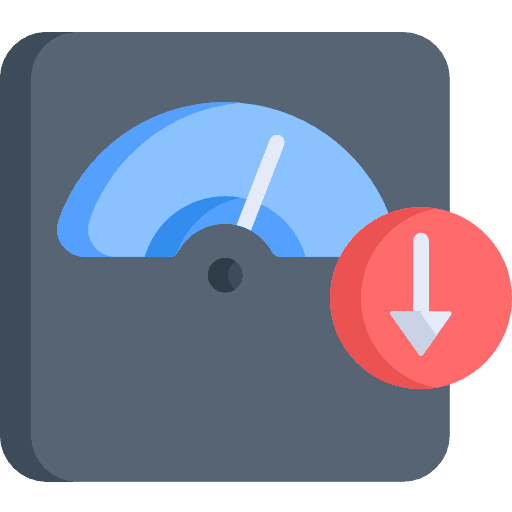
“Cycle syncing” is a trend that’s intended to hack your period.
Proponents of it argue that modifying your diet and exercise routine based on your cycle can improve your health.
It’s true that you may need certain nutrients like iron in greater amounts at key points during your cycle. You might also find that you respond to exercise differently depending on your menstrual phase.
However, no studies have specifically looked at cycle syncing.
The primary determining factor for weight loss is calories eaten versus calories burned. Your metabolic rate plays a key role in this, but it’s not exactly clear whether this rate changes across the menstrual cycle.
Studies on the topic have been small, with some showing higher metabolism during the luteal phase. Other studies suggest that metabolism remains relatively stable throughout the month.
In other words, there’s not much evidence to show whether changing your calorie level at different points in your cycle is effective or not (21, 22, 23).
That said, there are a few steps you can take to help stay on track with your weight loss goals.
Some of these strategies may minimize temporary weight gain from constipation or water retention, while others are aimed at behaviors that may sabotage your weight loss efforts.
The Follicular Phase
Your goals for the follicular phase are to remain active and minimize water retention.
Stay Active
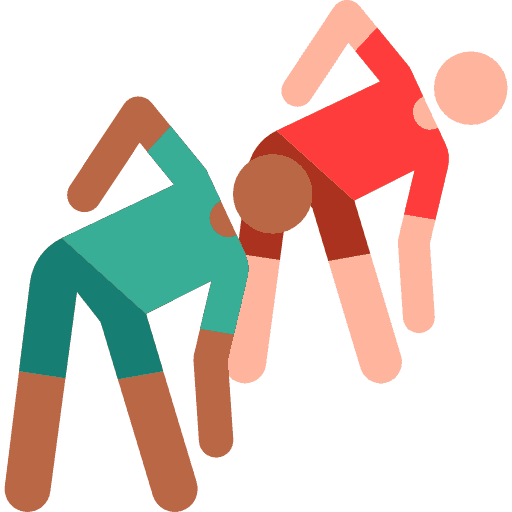
You may have days when you don’t feel like being active, particularly just before and during your period.
You don’t have to work out at high intensities on those days, or any day at all, but you should stay active. Walking, yoga and other lower intensity activities burn calories and also indirectly help with weight loss.
For example, studies have found that exercise helps with water retention, mood disorders and other factors that cause weight gain (24, 25, 26).
Watch Your Salt Intake
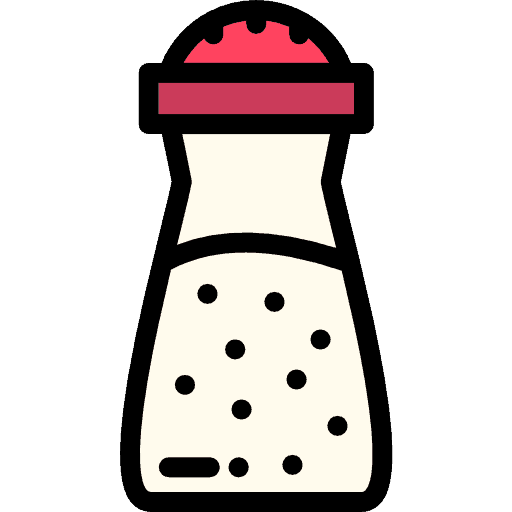
Salt contains sodium, an electrolyte that helps maintain fluid balance.
Sodium is often blamed for fluid retention (bloating), which can temporarily increase weight.
However, there’s conflicting evidence as to whether this is the case (27, 28).
Either way, most women would benefit from limiting dietary sodium. This practice is recommended for heart health and may help prevent water retention in premenopausal women.
An easy way to do this is to cut back on packaged and restaurant foods, which are two of the biggest sources of sodium in the diet.
Compare Your Weight from Month to Month

In most cases, it’s okay to weigh yourself every day.
Some studies have even linked this practice with long-term weight loss (29).
Still, it’s easy to become discouraged when the scale isn’t moving in the direction you’d like. Rather than worrying about fluctuations in weight, consider comparing your weight on the same day of your cycle each month.
This may help you more accurately gauge your progress. Many women retain less water near the end of their periods, so this might be a good time to check in.
The Luteal Phase
Your goals during the luteal phase are to manage your cravings and to minimize temporary weight gain from constipation and fluid retention.
Watch for Depression or Anxiety
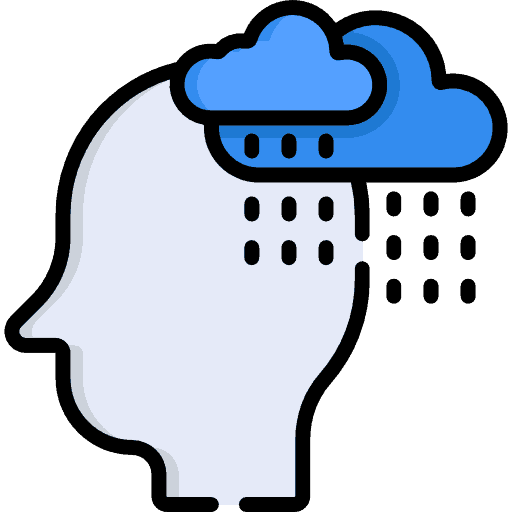
Mood disturbances are common in the days before your period (30).
Depression, anxiety and other mood disturbances may indirectly affect your weight by altering your sleep patterns and bowel habits. You may also be more likely to eat more when you’re in a bad mood (31).
Weight concerns aside, it’s important to speak with your doctor if you often feel sad, anxious, overwhelmed or depressed at any point during your menstrual cycle.
Practice Mindful Eating
Mindful eating is the practice of tuning in to your body’s hunger and fullness cues.
It may be especially helpful during the luteal phase, when cravings tend to be stronger.
There are lots of ways to eat more mindfully, but one is to learn the difference between physical and emotional hunger or cravings.
Physical hunger comes on gradually and can be satisfied by just about any food. Emotional hunger or food cravings come on suddenly and are often tied to one specific food.
If you’re showing signs of emotional hunger or cravings, see if you feel better after taking a walk, calling a friend or doing something that you enjoy. You can always eat if you’re still hungry.
Eat Enough Fiber

Most women don’t get enough fiber in their diets.
Fiber is highly satiating and helps with bowel regularity.
Studies have shown that adequate fiber intake can indirectly promote weight loss by feeding beneficial bacteria in the gut (32, 33).
Aim for at least 25 grams per day. Good sources of fiber include beans, apples, berries, nuts, popcorn, whole grains and seeds.
Don’t Go Carb Crazy

Craving carbs before your period?
There’s absolutely nothing wrong with carbs—they are an important part of a healthy diet. But be aware that carb-heavy meals can cause you to temporarily gain weight and look more bloated.
Try to stick to your normal daily carbohydrate intake, or no more than 325 grams per day on a 2,000 calorie diet. As much as possible, prioritize complex carbs like fruits, vegetables and whole grains.
And if you indulge a craving, know that your weight may go up for a couple of days. This is totally normal and should resolve fairly quickly.
Summary: Most women will experience weight changes throughout the menstrual cycle. Try to stay active and limit dietary sodium during the luteal phase. Do your best to eat mindfully, manage stress, and get enough fiber during the luteal phase.
You Can Lose Weight. Period.
Changing hormones throughout the menstrual cycle often make weight loss difficult for premenopausal women.
But losing weight is not impossible.
Being conscious of how you feel and how your eating habits may change throughout your cycle is the key to sticking to your weight loss goals.
A fiber-rich diet that’s not too high in simple carbs and sodium can help stabilize weight throughout the menstrual cycle.
Also, do your best to stay active with light to moderate exercise on a regular basis and to eat mindfully when cravings set in.
Finally, know that you’ll probably have days where hunger hormones are strong, or that you feel less energized in your workouts.
You may even feel like everything is working against you. Don’t be discouraged, as this is completely normal.
With a few healthy diet and lifestyle changes, you’ll be more likely to experience weight loss from month to month.

